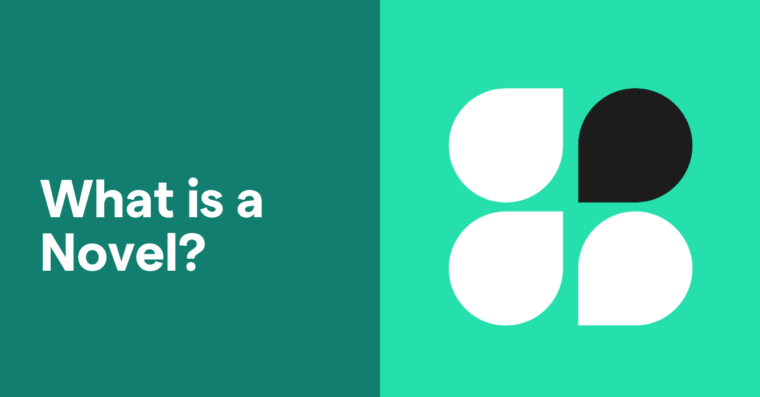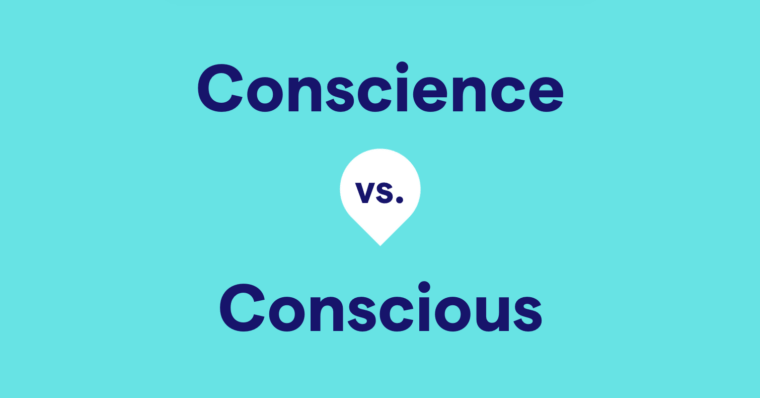
Paragraphs are medium-sized units of writing, longer than sentences, but shorter than sections, chapters, or entire works. Because they connect the “small” ideas of individual sentences to a “bigger” idea, paragraph structure is essential to any writing for organization, flow, and comprehension.
Students have a lot of questions when it comes to writing a paragraph: How many sentences should you use? How do you transition within a paragraph? When do you end a paragraph? Etc. Below we explain everything you need to know about paragraph structure to write like an expert, including several paragraph examples.
What is a paragraph?
A paragraph is a unit of writing that consists of one or more sentences, all of which relate to the same topic. Paragraphs are essential for organizing long pieces of writing such as novels, papers, or even emails. Each paragraph should focus on a single topic.
How is a paragraph structured?
Before we dive into paragraph structure, let’s start with paragraph meaning. A paragraph is an individual segment of writing that discusses a central idea, typically with more than one sentence. It even has its own paragraph symbol in copyediting, called the pilcrow (¶), not to be confused with the section symbol called the silcrow (§) that’s common in legal code.
Here we focus mainly on paragraph structure, but feel free to read our ultimate guide to paragraphs for more of the basics.
Parts of a paragraph
Like other forms of writing, paragraphs follow a standard three-part structure with a beginning, middle, and end. These parts are the topic sentence, development and support, and conclusion.
Topic sentences, also known as “paragraph leaders,” introduce the main idea that the paragraph is about. They shouldn’t reveal too much on their own, but rather prepare the reader for the rest of the paragraph by stating clearly what topic will be discussed.
The development and support sentences act as the body of the paragraph. Development sentences elaborate and explain the idea with details too specific for the topic sentence, while support sentences provide evidence, opinions, or other statements that back up or confirm the paragraph’s main idea.
Last, the conclusion wraps up the idea, sometimes summarizing what’s been presented or transitioning to the next paragraph. The content of the conclusion depends on the type of paragraph, and it’s often acceptable to end a paragraph with a final piece of support that concludes the thought instead of a summary.
How many sentences are in a paragraph?
Most paragraphs contain between three and five sentences, but there are plenty of exceptions. Different types of paragraphs have different numbers of sentences, like those in narrative writing, in particular, where single-sentence paragraphs are common.
Likewise, the number of sentences in a paragraph can change based on the style of the writer. Some authors prefer longer, more descriptive paragraphs, while other authors prefer shorter, faster-paced paragraphs.
When it comes to nonfiction writing, like research papers or reports, most paragraphs have at least three sentences: a topic sentence, a development/support sentence, and a conclusion sentence.
Types of paragraphs
Depending on the kind of writing you’re doing, you may need to use different types of paragraphs. Here’s a brief explanation of the common paragraph types most writing deals with.
- Expository: Common in nonfiction and all types of essays, expository paragraphs revolve around explaining and discussing a single point or idea.
- Persuasive: Just like expository paragraphs, persuasive paragraphs focus on discussing a single point; however, they support opinions instead of facts.
- Narrative: When telling a story, a narrative paragraph explains an action or event. Each new sentence furthers or expands upon the action by providing new information.
- Descriptive: Also common in storytelling, descriptive paragraphs focus on describing a single topic, such as a person or an environment. Each new sentence adds a new detail about that topic.
The type of paragraph used usually depends on the type of writing. For example, if you’re writing a research paper, it would be difficult to justify a narrative paragraph.
Example paragraphs from literature
Rather than merely talk about paragraph structure, let’s look at some paragraph examples so you can see structure in action.
The first paragraph example comes from Bertrand Russell in his essay “Icarus, or the Future of Science.” This excerpt uses the same paragraph structure often used in research papers, essays, and other nonfiction writing. The first sentence makes a claim, and the subsequent sentences defend that claim, ending in a strong conclusion that ties everything together.
If men were rational in their conduct, that is to say, if they acted in the way most likely to bring about the ends that they deliberately desire, intelligence would be enough to make the world almost a paradise. In the main, what is in the long run advantageous to one man is also advantageous to another. But men are actuated by passions which distort their view; feeling an impulse to injure others, they persuade themselves that it is to their interest to do so. They will not, therefore, act in the way which is in fact to their own interest unless they are actuated by generous impulses which make them indifferent to their own interest. This is why the heart is as important as the head. By the “heart” I mean, for the moment, the sum-total of kindly impulses. Where they exist, science helps them to be effective; where they are absent, science only makes men more cleverly diabolic.
Notice how all sentences in the paragraph relate to the same idea: That humans act emotionally more than rationally. However, each sentence makes its own unique point, and when taken together, they connect to the central topic.
Another nonfiction paragraph example comes from Twelve Years a Slave, a memoir from freeborn African-American Solomon Northup who was kidnapped and forced into slavery for twelve years before friends and family intervened with the help of the law.
I expected to die. Though there was little in the prospect before me worth living for, the near approach of death appalled me. I thought I could have been resigned to yield up my life in the bosom of my family, but to expire in the midst of strangers, under such circumstances, was a bitter reflection.
Each sentence in this paragraph example relates to the feeling described in the topic sentence. Although writing in a narrative form, Northup waits until a new paragraph to continue the story—this paragraph focuses solely on that one emotion.
Finally, let’s look at a fiction paragraph example. In Bram Stoker’s Dracula, one of the protagonists, Jonathan Harker, describes the appearance of Count Dracula.
His face was a strong—a very strong—aquiline, with high bridge of the thin nose and peculiarly arched nostrils; with lofty domed forehead, and hair growing scantily round the temples but profusely elsewhere. His eyebrows were very massive, almost meeting over the nose, and with bushy hair that seemed to curl in its own profusion. The mouth, so far as I could see it under the heavy moustache, was fixed and rather cruel-looking, with peculiarly sharp white teeth; these protruded over the lips, whose remarkable ruddiness showed astonishing vitality in a man of his years. For the rest, his ears were pale, and at the tops extremely pointed; the chin was broad and strong, and the cheeks firm though thin. The general effect was one of extraordinary pallor.
Paragraphs in fiction are more flexible with the rules, but nonetheless, this paragraph includes both a topic sentence and a concluding summary. Notice how all the details pertain to Dracula’s face and head; Stoker begins a new paragraph when describing other parts of his appearance, like his hands, because the author treats it as a separate topic.
How to write a paragraph
Paragraph structure isn’t just for the benefit of readers, it also helps authors organize their thoughts and communicate clearly. Below we explain the different steps of how to write a paragraph, from the paragraph introduction all the way to the conclusion.
How to plan a paragraph
Before you begin writing a paragraph, look at how the paragraph fits into the writing as a whole. As mentioned above, different types of writing use different types of paragraphs, so make sure the paragraph type you’re planning matches the context.
Ideally, you’ll already have an outline for whatever you’re writing, which will tell you what the paragraph is about and what to include. If not, your first step is to decide on the paragraph topic and which facts to include as support and development.
Keep in mind what comes before and after the paragraph so you can plan the right topic for the flow of your writing. It’s jarring for the reader when the author jumps wildly from one topic to the next, so try to keep all related paragraphs together and in a logical sequence. If that’s not possible, plan your topic sentence as a segue, perhaps using a transition word.
It also helps to sketch out the parts of your paragraph: topic sentence, development and support, and conclusion. The more you prepare these parts now, the easier it will be to put them into words later.
How to start a paragraph
Unless you’re doing narrative writing, your paragraph introduction should always be the topic sentence. The trick is to avoid overexplaining—say only what’s necessary. The goal of the topic sentence is to inform the reader what the paragraph is about; everything extra should be saved for the following sentences.
For example, in the Twelve Years a Slave paragraph sample, the topic sentence is only four words long. Northup saves the details for the following sentences. As an added effect, the brevity of his first sentence adds both mystery and potency, piquing the reader’s interest and enticing them to continue.
On a technical note, when beginning a new paragraph, follow the rules of paragraph indentation for whatever style guide you’re using. There is a paragraph indentation debate about when to indent the first line and when not to; really, it depends on the assignment or audience.
How to transition within a paragraph
It’s not enough to just throw all your support sentences into a paragraph and hope for the best. For the convenience of your reader, it’s best to connect the sentences in a way that lets the reader move from one point to the next without getting confused.
While some paragraph sentences will run together on their own, sometimes you need transition sentences to assist the flow. Transition sentences make use of transition words like “however,” “therefore,” or “similarly,” or sometimes directly reference the preceding sentence.
Consider the sentence in Russell’s paragraph example: “This is why the heart is as important as the head.” If Russell had said only “The heart is as important as the head,” it would have created an abrupt tone—he adds “this is why” to ease the transition.
If your sentences create a list, such as instructions, you can transition from one item to another using ordinals like “first,” “second,” “third,” etc. Ordinals work well with difficult transitions because they can fit almost any paragraph.
How/when to end a paragraph
When you’ve said everything you need to say about a topic, it’s time to end the paragraph. If the paragraph looks like it’s too long after you’ve said everything, consider breaking it up into separate topics and paragraphs for the sake of the reader.
The best way to end a paragraph is to sum up the topic with all the new information from the support sentences. In the excerpt from Dracula, Stoker concludes with an overall impression of the Count from all the details listed in the previous sentences.
However, it’s not always necessary to restate the topic, which can sometimes come across as padding. It’s equally viable to end a sentence stating one final piece of support. In these instances, it’s best to conclude with the piece of information that has the most profound effect, as with Northup’s excerpt.
Paragraph structure FAQs
What is a paragraph?
A paragraph is a collection of sentences that relate to a single topic.
What are the keys to a strong paragraph?
A strong paragraph explores a single topic with details following in a logical order. Paragraphs often use transitions to connect otherwise disjointed sentences, helping every piece of information to work together.
How is a paragraph structured?
Good paragraphs begin with a topic sentence that briefly explains what the paragraph is about. Next come a few sentences for development and support, elaborating on the topic with more detail. Paragraphs end with a conclusion sentence that summarizes the topic or presents one final piece of support to wrap up.





